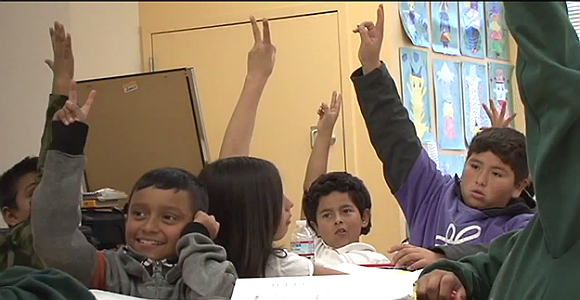
(Photo Credit: John Guenther)
There’s been another education gap identified in California and this time it’s regarding awareness of–and involvement in–the state’s ambitious school funding reform plan, according to a new poll released yesterday. But the upshot is there’s a big opportunity for getting the word out since, once people know what exactly the Local Control Funding Formula (LCFF) is intended to do, they support it by a big margin.
LCFF is, of course, the landmark school funding law putting more control over money into the hands of those directly affected: the school boards and districts themselves.
Despite the importance of this shift, three in four Californians surveyed hadn’t heard of LCFF, said a new poll by the Public Policy Institute of California (PPIC), though seven in 10 thought it was a good idea once they were briefed on the initiative.
Among surveyed parents who received info about providing input to local school districts about how to spend funding, fewer than one in five reported having gotten involved in the process.
At the same time, the survey showed support for the LCFF goals and additional funding for schools in general. Fifty-six percent of respondents were either very or somewhat confident that school districts selected to receive additional LCFF funding for English language learners and lower-income students will actually spend it on them. And a big majority (68 percent) said LCFF will improve the achievement of those groups.
A large percentage (60 percent) thought that local schools weren’t receiving enough state funding, while a little over half said they would grade their schools with an A or B.
Ever since school districts have begun the implementation phase, concerns have been raised about how schools would engage with low-income, immigrant, foster, or disadvantaged families, especially since districts with large percentages of those groups would receive additional funding to help with achievement gaps.
To that concern, somewhat encouraging is the word that low-income parents surveyed were more likely to have received info about participating than wealthier parents (51 percent vs. 37 percent). However, there seems to be a need to build up engagement and increase opportunities to get involved across the state, as a majority said they received no info.
A working group tasked with helping schools navigate the LCFF, the California School Boards Association/California Forward LCFF Collaborative Working Group, has identified stakeholder outreach as one of three top priorities as they work through implementation of this new reform. All school districts are required to create these plans that
essentially describe how they will address the eight state-wide priorities and meet their local educational objectives.
The group, created by California School Board Association (CSBA) and California Forward (CA Fwd), is composed of superintendents and board members from 17 statewide Local Education Agencies.
You can read more stories about the Collaborative in our LCFF archives and more about how California schools can become a potential leader for “whole system reform” in CA Fwd’s paper, prepared with education reform authority Dr. Michael Fullan, A Golden Opportunity: The California Collaborative for Educational Excellence as a Force for Positive Change.

